Water is Life
Safe drinking water is vital for public health, and RWSA takes immense pride in providing clean, safe drinking water for Charlottesville and Albemarle County citizens.
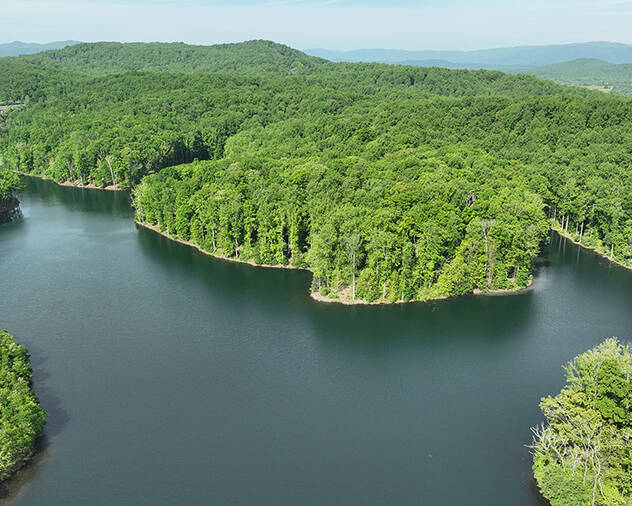
Ragged Mountain Reservoir
The total capacity of our reservoirs is 3.3 billion gallons of water. We also have several storage tanks for clean drinking water throughout the service area.
Water is treated at one of our six water treatment plants by our dedicated, licensed water treatment professionals, who work around the clock to provide the community with clean, safe drinking water.
Sediment, bacteria, and other impurities must be removed through the treatment process before reaching your tap. RWSA regularly samples and tests water to ensure that our drinking water meets all federal and state regulations.
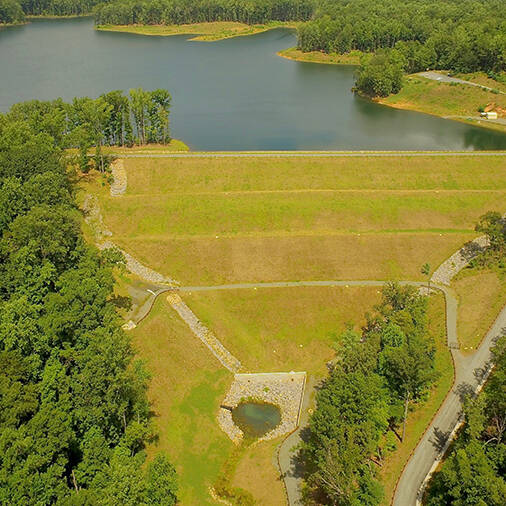
Featured Content
Community Water Supply Plan
In 2002, the Central Virginia Region experienced a historical drought that prompted a decade-long water supply planning process to ensure the needs of our region are reliably met.
Pictured: Ragged Mountain Dam
Ensuring Clean and Safe Water
At Rivanna, we’re dedicated to delivering top-quality water to our community. Discover our standards, rigorous testing, water sources, and advanced treatment processes that ensure your water is clean, safe, and reliable.
Use the buttons below to navigate directly to your section of interest.
Water Quality
We conduct over 2,100 water samples and 7,700 lab tests annually to maintain high drinking water quality for ACSA and the City. Established in 1974, the Safe Drinking Water Act mandates the EPA to set minimum tap water standards, which we adhere to at RWSA.
Addressing Algal Blooms
In recent years, harmful algal blooms have posed challenges to water quality across the U.S. Due to excessive nutrients and warm temperatures, these blooms can impact human health and recreational activities. To combat this, we’ve developed a comprehensive algae management program that includes:
Monitoring
Regular sampling and analysis of reservoir water for algae types and quantities
Evaluation
Assessing data to determine if action is needed, and if so, which solutions
Management
Implementing treatments and making adjustments to minimize algae issues
Commitment to Long-Term Monitoring
We are dedicated to ongoing monitoring to identify trends and will continue collaborating with organizations like the Rivanna Conservation Alliance and local government agencies to support watershed improvement and water quality education.
Water Testing
Our team of four full-time laboratory chemists conducts over 7,700 tests each year to ensure our drinking water complies with all federal and state regulations. We also test wastewater to support daily treatment operations and ensure that final effluent exceeds required standards.
Key Responsibilities
Algae Monitoring
Identifying and counting algae populations in reservoirs to prevent harmful blooms.
Bacterial Testing
Analyzing water and wastewater for coliform and E. coli bacteria.
Nutrient and Metal Analysis
Measuring nitrogen, phosphorus, metals, oxygen demand, and solids.
A typical day includes running nutrient analyses and preparing reagents for our main lab and satellite treatment plants. We also provide laboratory services for the Albemarle County Service Authority (ACSA) and the City of Charlottesville Utilities.
Water Sources
We operate five surface water treatment plants that draw raw water from our reservoirs. We also have one groundwater treatment plant that utilizes underground water, similar to a well.
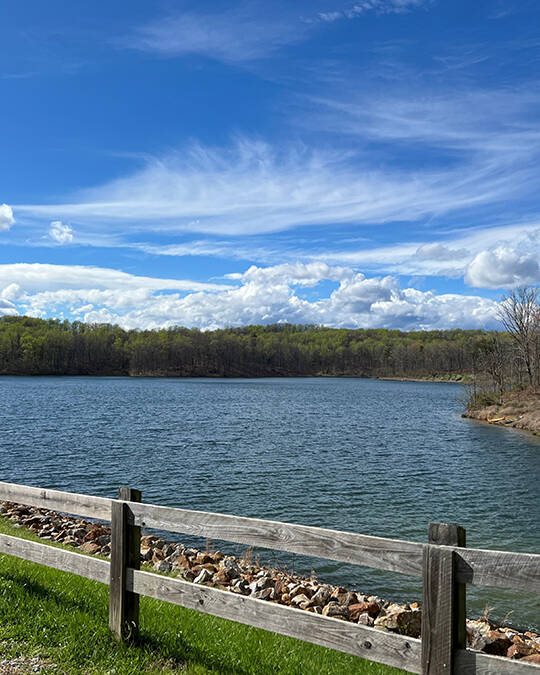
Storage Capacity
1.4 billion gallons of stored water when full
Water Surface Area
170 acres
Watershed
2 square miles
Area Served
Urban Water System
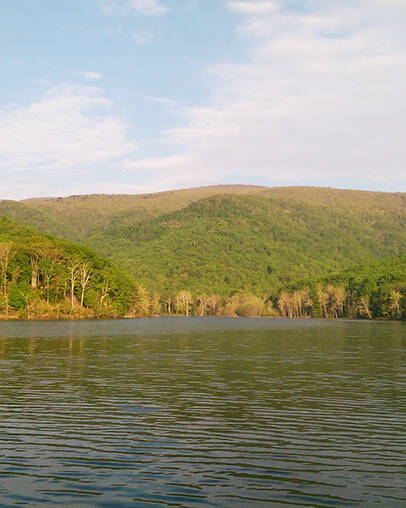
Storage Capacity
339 million gallons of stored water when 100% full
Water Surface Area
47 acres
Watershed
18 square miles
Area Served
Urban Water System
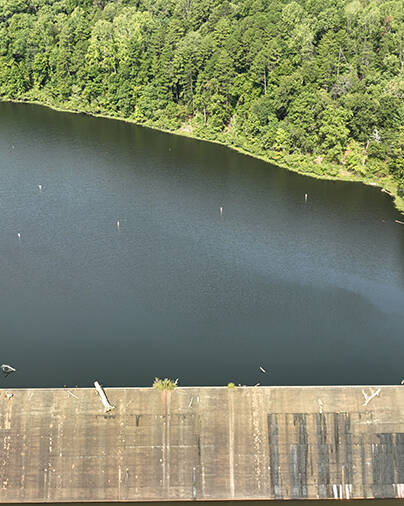
Storage Capacity
885 million gallons of stored water when 100% full
Water Surface Area
366 acres
Watershed
259 square miles
Area Served
Urban Water System

Storage Capacity
521 million gallons of stored water when 100% full
Water Surface Area
104 acres
Watershed
10 square miles
Area Served
Crozet
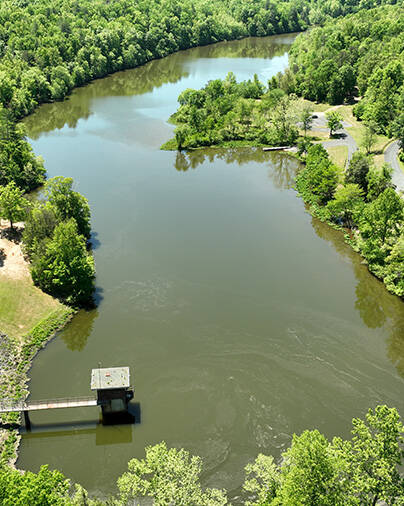
Storage Capacity
155 million gallons of stored water when 100% full
Water Surface Area
66 acres
Watershed
29 square miles
Area Served
Scottsville
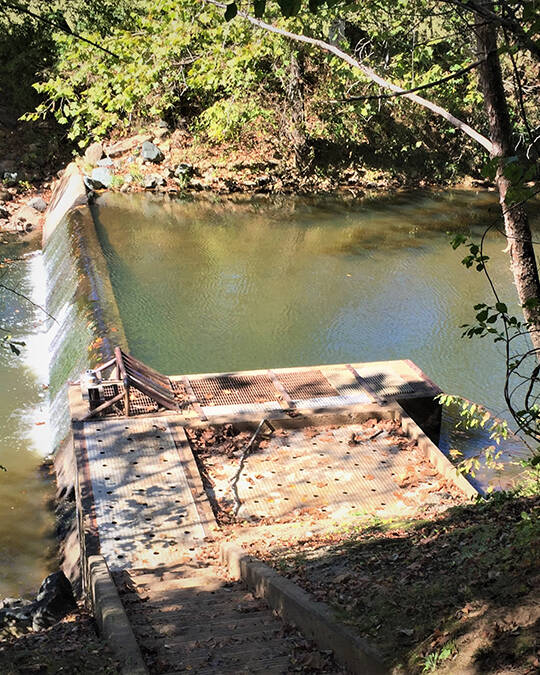
The North Fork Rivanna River Intake consists of a low head dam and pump station delivering water to the North Fork Water Treatment Plant located in Albemarle County.
Water from this source serves parts of the Route 29 corridor north including the Charlottesville Albemarle Regional Airport.
Recreation and Safety
While our lakes are beautiful, their main function is to provide clean, safe water for drinking, fire protection, manufacturing, agriculture, and more.
In some cases, we encourage recreational use of these areas — though it is important that rules are followed for safety purposes.
Water Treatment
Before reaching your tap, water undergoes a multi-step treatment process to ensure that it is safe for drinking and other uses.
We operate six drinking water treatment plants with a daily average of 10.2 million gallons of water treated daily.
- Crozet Water Treatment Plant
- North Rivanna Water Treatment Plant
- Observatory Water Treatment Plant
- Scottsville Water Treatment Plant
- South Rivanna Water Treatment Plant
- Red Hill Water Treatment Plant
The urban system consists of the North Rivanna Water Treatment Plant, the South Rivanna Water Treatment Plant and the Observatory Water Treatment Plant. These three plants combined produce 9.5 million gallons a day (MGD) to serve the City of Charlottesville and the Albemarle County urban ring.
Our other three plants service Crozet, Scottsville and the Red Hill area of Albemarle County. They produce .7 million gallon a day, on average.
Water Sources
Raw water from our reservoirs and rivers is pumped into the water treatment plants.
Coagulation/Flocculation
Once it arrives at the plant, the water is treated with coagulant, the pH is adjusted, and water is rapidly mixed together to help disperse the coagulant. After the rapid mixing process, the water flows into flocculation basins, where the flow of water is slowed and slowly mixed so that the particulates stick together to form bigger particles called floc.
Sedimentation
Next, the water flows into sedimentation basins, where the heavy floc particles sink to the bottom and are removed.
Filtration
The water flows through large filters made of sand and anthracite coal. Filtration removes particles and microorganisms.
Adsorption
All of our treatment plants use Granular Activated Carbon (GAC) adsorption filters, a gold standard when it comes to water treatment to further increase our water quality. GAC removes taste- and odor-producing compounds, natural organic matter, volatile organic compounds (VOCs), synthetic organic compounds and disinfection byproduct precursors. GAC has also been found to be effective in the removal of PFAS compounds.
Disinfection
We use chlorine to disinfect the water, and a residual level of chlorine is maintained throughout the distribution system as a protective barrier against microbial contamination.
Final Treatment
After chlorine disinfection, the pH of the water is adjusted and a corrosion inhibitor is added to minimize corrosion of the distribution system piping, and a low level of fluoride (0.7 mg/L, or ppm) is added to support good dental health.
Rivanna is committed to providing reliable, clean, safe drinking water for our community, now and in the future.
But before it gets to your house, it takes highly skilled, trained, and licensed professionals working around the clock to ensure things like consistent pressure, high-quality taste, and reliability.
A typical day for one of our licensed water operators includes checking the weather forecast and conditions, monitoring water quality and other instrument readings, onsite inspections, and continual adjustments of the water treatment processes. We use a variety of on-line instruments that take continual readings, and we verify those measurements with bench top instruments. We also walk the plant to visually inspect the various treatment processes going on. A large weather event like a tropical storm can create sediment-filled source water, which means that water treatment can be more challenging. It’s our job to keep the water running.

Totier Creek
Additional Resources
City of Charlottesville Water Quality
Albemarle County Water Quality
US EPA Safe Drinking Water Act (SDWA)
EPA Safe Drinking Water Hotline is 1-800-426-4791 or visit the EPA’s website
RWSA, ACSA, and the City Department of Utilities Joint Statement on Lead in Drinking Water
